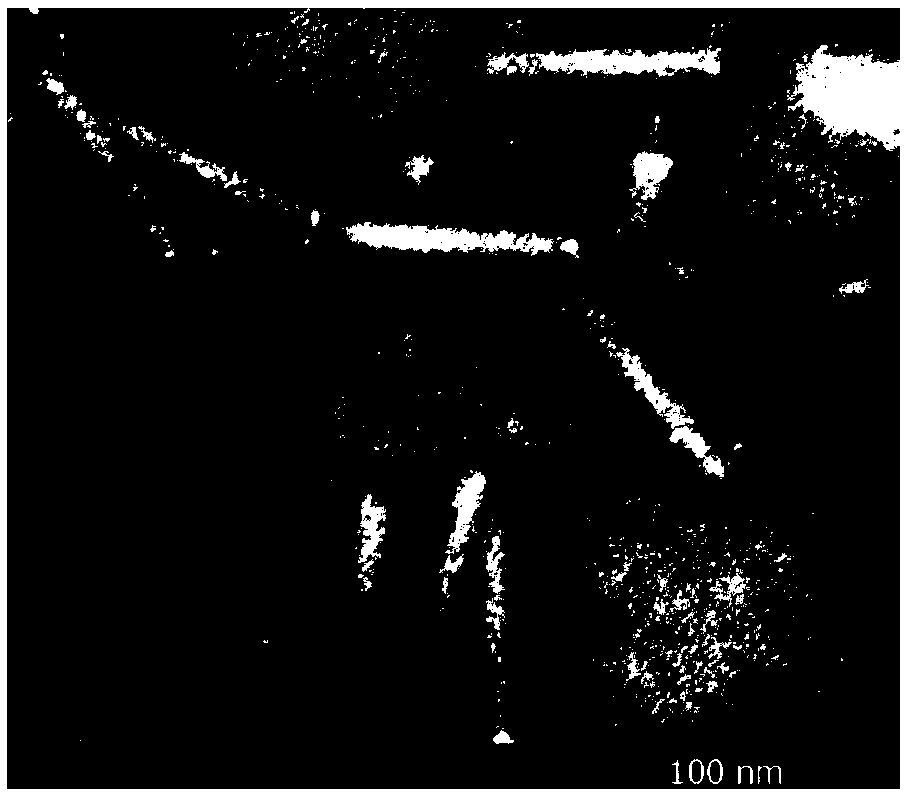Stenotrophomonas maltophilia and wide-spectrum maltocin synthesized from Stenotrophomonas maltophilia and application thereof
A oligotrophomonas and maltophilia technology, applied in the field of microorganisms, can solve the problems of narrow bactericidal spectrum, inability to kill or inhibit, and achieve the effects of wide bactericidal spectrum, high bactericidal activity, good development and application prospects
- Summary
- Abstract
- Description
- Claims
- Application Information
AI Technical Summary
Problems solved by technology
Method used
Image
Examples
Embodiment 1
[0030] Screening and identification process of embodiment 1 bacterial classification
[0031] 1.1 Screening of Stenotrophomonas maltophilia S16 strain
[0032] 1.1.1 Inoculate a single colony of Stenotrophomonas maltophilia into 5mL liquid LB medium, and cultivate overnight at 30°C and 200rpm;
[0033] 1.1.2 Mix 100 μL overnight culture solution with 4.5 mL semi-solid medium, pour it into LB plates to prepare double-layer plates;
[0034] 1.1.3 Transfer the overnight culture solution in step 1.1.1 to fresh liquid LB medium according to 1% inoculum amount. After culturing for 3 hours, add mitomycin C (final concentration 0.5 μg / mL) and continue culturing Overnight; take 1mL of the bacterial solution and centrifuge at 4°C, 10000rpm for 1min, take the supernatant, and filter;
[0035] 1.1.4 Take 2.5 μL of the above-mentioned culture supernatant and drop it on the double-layer plate. After standing overnight at room temperature, observe whether a transparent circle is formed on ...
Embodiment 2
[0053] The acquisition and identification of embodiment 2 maltophilin
[0054] 2.1 Obtaining maltophilin
[0055] Stenotrophomonas maltophilia was cultured in 100mL LB liquid medium at 30°C until the bacterial liquid OD 600 When the value was 0.5, mitomycin C (0.5 μg / mL) was added, and the culture was continued for 12-14 hours with shaking at 200 rpm. The cultured bacterial solution was centrifuged at 10,000 g for 10 min at 4°C, the supernatant was aspirated, PEG8000 (4%, m / v) and NaCl (3%, m / v) were added, mixed well, and left standing overnight at 4°C. Centrifuge at 10,000 g for 30 min at 4°C, suspend the precipitate in 1 mL of TE buffer, and obtain the maltophilin extract after filtration.
[0056] The maltophilin crude extract was loaded on a DEAE-cellulose ion-exchange chromatography column, and sequentially dissolved in 0.01M phosphate buffer (pH6.8) with a nonlinear gradient NaCl solution (0, 0.3, 0.4 and 0.7 M) eluting to obtain a purified sample.
[0057] 2.2 Malt...
Embodiment 3
[0060] Example 3 Variation of the bactericidal activity of maltophilin at different temperatures
[0061] Incubate the samples of maltophilin S16 at different temperatures for 10 min, and then quickly cool them in ice, then dilute the samples with 2-fold gradient with TE buffer solution, take 2.5 μL of the diluted solution and drop them on the double-layer plate in turn, and incubate at 30 °C Then observe the inhibition zone and calculate the bactericidal activity of maltophilin.
[0062] Table 2 Residual bactericidal activity of maltophilin after treatment at different temperatures (×400AU / mL)
[0063]
[0064]
[0065] Note: Maltophilia 16 indicator strain is Stenotrophomonas maltophilia S21 strain;
[0066] The indicator strain of maltophilia P28 is Stenotrophomonas maltophilia strain c6.
[0067]The results in Table 2 show that when the temperature is 45°C or below, the bactericidal activity of maltophilin S16 has no effect. When the temperature rises to 50°C, its ...
PUM
 Login to View More
Login to View More Abstract
Description
Claims
Application Information
 Login to View More
Login to View More - R&D
- Intellectual Property
- Life Sciences
- Materials
- Tech Scout
- Unparalleled Data Quality
- Higher Quality Content
- 60% Fewer Hallucinations
Browse by: Latest US Patents, China's latest patents, Technical Efficacy Thesaurus, Application Domain, Technology Topic, Popular Technical Reports.
© 2025 PatSnap. All rights reserved.Legal|Privacy policy|Modern Slavery Act Transparency Statement|Sitemap|About US| Contact US: help@patsnap.com



